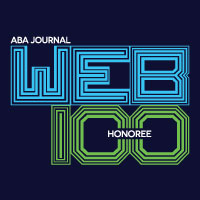Glenn Rawdon’s speech titled Everyone, Anytime, Anywhere at the April 8 White House Forum on Increasing Access to Justice was about far more than technology. After describing how Bill gates talked in 1999 about technology convergence, the history of the TIG program, and the recent LSC Technology Summit Process, Glenn went on to talk about how the vision went beyond the tools to the access vision.
This is a vision for the convergence of the technology — for unified systems to achieve the ultimate goal enunciated in the Summit’s Mission Statement, that is, to provide some form of effective assistance to 100% of persons otherwise unable to afford an attorney for dealing with essential civil legal needs.
I want to home in on the phrase “some form of effective assistance.” This doesn’t mean a lawyer for everyone for every matter; that’s just not realistic. What it does mean is not turning anyone away with no assistance at all, which is what happens all too often today.
How do we achieve this? By providing three different levels of assistance:
Information – for those whose problem lends itself to self-help and who have the ability to do it themselves if they have the right tools and information
Advice – for those who can still help themselves but need guidance and advice to get there
Representation – for those who, because of the nature of the case, the stakes, and their circumstances, need a lawyer
The technology tools we need to deliver these different levels are already under way through projects of LSC’s grantees; projects to further vision of the Summit.
Triage pilots in New Mexico, Montana, and Maine. These systems will ask questions of the users and use the answers to direct them to the most appropriate resource, be that information, advice, or representation.
The LawHelp Interactive document assembly project, with over 3000 documents from more than 40 states that produced over 450,000 documents last year.
Mobile-friendly website redesigns in Louisiana, text messaging reminders in Virginia, and redesign of the A2J Author tool for mobile devices. If you are not familiar with it, A2J Author is a tool developed with funding from the State Justice Institute and LSC that is used by many legal aid programs and courts to do the interviews needed for automated forms, online intake, and triage.
Our challenge is to be sure that, when these tools are built, the pieces that technology cannot provide are there. It would be futile to build a system to direct users to the appropriate resource when that resource is missing. This means that, in addition to our traditional resources, we have in place robust websites, instructional videos, actual court forms to be automated, attorneys who do unbundled advice, and court self-help systems.
We make this happen by convergence — Legal aid, the bench, the bar, law schools, libraries, and anyone else who cares about justice, coming together so all the pieces are there. No more each building our own systems, but a cooperative approach to provide the information, advice, and representation needed so that access to justice is there for Everyone, Anytime, Anywhere.
Let me urge that not only is this speech being about more than technology, it is also about more than access to justice. This is because what Glenn is talking about is how technology offers the opportunity to help an organization or group re-think the potential reach of its own mission. To be blunt, without the technology components, it would be impossible to be talking about “some form of effective assistance” to all. Here is the question: How many other fields might benefit from thinking in the same way about the broadening of overall potential through technology components. How many have been focusing on the (admittedly valuable) social media opportunities to tell their story better, rather than thinking aobut how they might be investing in a better story.
The access to justice world has a lot to teach the rest of the nonprofit and service communities. Lets start sharing it.
Update:
The video is now posted here.


Pingback: What we’re reading this week | ACBA News
I was honored to attend the White House Forum and agree that Glenn Rawdon’s speech was one of the real highlights of the event.
Thank you so much for sharing this and your previous post about the Forum, Richard. Last year there were videos of the forum online and I haven’t seen any yet this year, so these summaries are most welcome!
hello Lizkpbn,
we will be posting the videos of the panels in a few days.